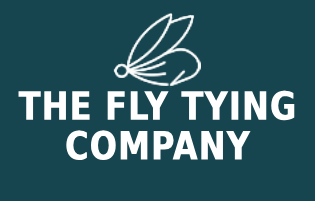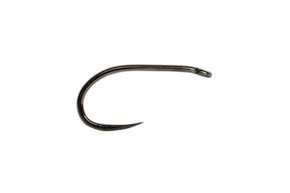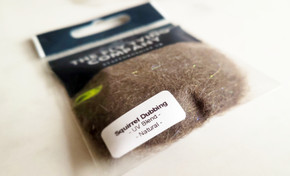Origin and History
The Montana Nymph was developed in the USA to imitate large stonefly nymphs, but it quickly found popularity in the UK as an attractor nymph for stillwater trout. Its bold black and fluorescent yellow or green body makes it highly visible, working well even when trout are not feeding selectively. The Montana became especially popular on reservoirs and stocked fisheries from the 1960s onwards, often fished deep and slow to tempt rainbows and browns.
Materials
- Hook: Nymph or wet fly hook, sizes 8–12
- Thread: Black 6/0 or 8/0
- Tail: Black cock hackle fibres
- Body: Black chenille or dubbing
- Rib: Fine oval gold tinsel (optional)
- Thorax: Fluorescent yellow or green chenille/dubbing
- Hackle: Black hen hackle (palmered over thorax)
Popular Variations
- Green Montana – fluorescent green thorax instead of yellow
- Beaded Montana – adds a tungsten or brass bead for depth
- Rubber Leg Montana – adds rubber legs for movement
- Mini Montana – tied smaller for pressured fish
- Hot Spot Montana – thorax in orange or chartreuse for extra visibility
Step-by-Step Tying Guide
- Start the thread at the hook bend and tie in a small bunch of black cock hackle fibres as the tail.
- Tie in fine oval gold tinsel for ribbing if using.
- Build a slim body of black chenille or dubbing, stopping short of the eye.
- Rib the body with gold tinsel in evenly spaced turns to add segmentation.
- Prepare fluorescent chenille or dubbing and form a rounded thorax, leaving room behind the eye.
- Tie in a black hen hackle and make 2–3 turns over the thorax area.
- Whip finish and add a drop of varnish to complete the fly.
Seasonality & Representation
The Montana is a year-round stillwater favourite, especially effective in spring and autumn when trout feed aggressively. It does not represent a specific insect in UK waters but suggests stonefly nymphs, large caddis larvae, or simply acts as a bold attractor fly. Trout often take it when other patterns fail due to its strong colour contrast.
Tackle and Setup
- Rod: 9–10ft, 6–7wt for stillwaters
- Line: Floating, intermediate, or sinking lines depending on depth
- Leader: 9–12ft fluorocarbon, 6–8lb
- Retrieve: Slow figure-of-eight or steady pulls; can also be fished under an indicator
Summary Table
| Aspect | Details |
|---|---|
| Origin | USA, adopted widely in UK stillwaters |
| Best Seasons | Spring and Autumn (but effective year-round) |
| Represents | Stonefly nymphs, caddis larvae, attractor pattern |
| Hook Sizes | 8–12 |
| Tackle Setup | 9–10ft rod, floating/intermediate/sinking line, 9–12ft leader |












